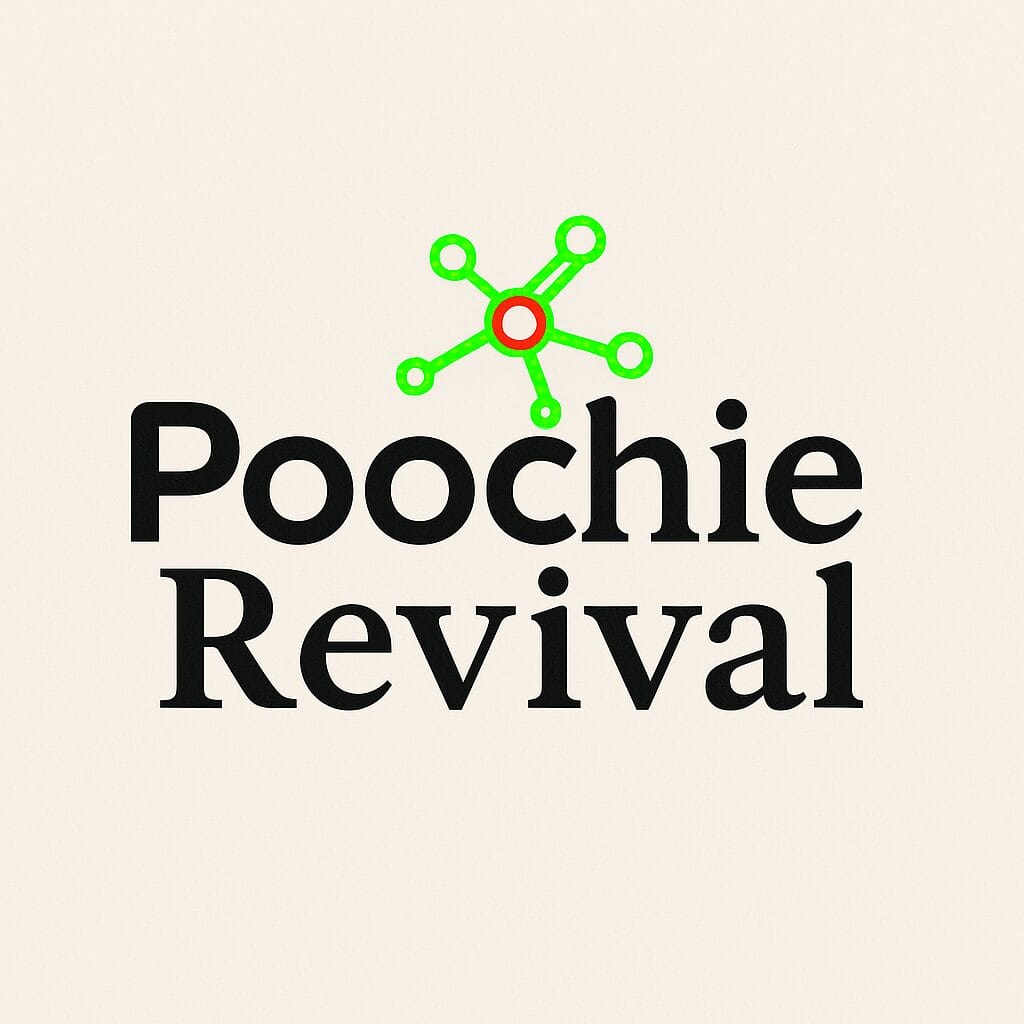Phosphorus (P) is the second most common mineral in the body, but it can be confidently called the most common mineral in nutrition. Phosphorus is everywhere, and it is impossible to find food that does not contain phosphorus.
This is because phosphorus is the most important mineral in producing ATP, the cells’ own energy, and both plants and animals use ATP. In dog nutrition, phosphorus is practically only discussed in the context of the calcium-to-phosphorus ratio, and even then, the concern is about calcium intake, not phosphorus. Since phosphorus is obtained from all directions and because it is critical for energy production in the body, the kidneys regulate the body’s phosphorus balance very efficiently, and therefore phosphorus deficiency due to diet is a theoretical problem that is not encountered in practice. If a dog has a phosphorus deficiency, it is always related to some illness.
Phosphorus Reserves
About 85 percent of the body’s phosphorus is in the form of calcium phosphate in the bones as a structural component and stored in the teeth. Phosphorus also participates in growth and tissue maintenance as part of DNA and RNA, in all energy-requiring reactions, in cell structures, in several metabolic reactions through ATP, and in fluids as a buffer reserve to maintain a constant pH in the body.
Phosphorus is actively absorbed with the help of vitamin D, just like calcium. However, because phosphorus absorption depends on the amount of vitamin D, there is also passive absorption involved. The role of vitamin D is likely linked to the belief that a high amount of phosphorus would inhibit calcium absorption as they compete for a similar transport pathway.
The efficiency of phosphorus absorption is directly proportional to its amount in the diet, but also to its form. Phosphorus from animal-based foods and bones is well absorbed within the general digestibility of the raw material, but the salts of phosphorus in plants, phytate, are not utilizable except in small amounts after cooking. Phytates also inhibit the utilization of other minerals.
Phosphorus is said to affect calcium absorption in the intestines, and it does so to some extent. In vivo studies have shown that calcium absorption was significantly reduced if phosphorus was not present, but when calcium levels were high, calcium absorption also increased, and it did not affect phosphorus absorption (Cramer 1968). Overall, only the amount of phosphorus affected its absorption. However, there was an exception. If the pH became too acidic, phosphorus utilization decreased. NRC 2006 states the opposite, reporting abundant research evidence that a higher amount of calcium, when the Ca/P ratio exceeds 2:1, impairs phosphorus utilization. However, “abundant” means two studies, Jenkins & Phillips 1960b and Schoenmakers et al. 1999.
NRC (1985) states laconically that phosphorus deficiency occurs hardly ever outside experimental conditions
In principle, a mild phosphate deficiency causes problems only in some metabolic diseases, such as chronic kidney disease. Chronic deficiency, on the other hand, causes a decrease in bone mineral content, heart muscle damage, and impaired oxygen supply to tissues.
In the case of a growing puppy, phosphorus deficiency would cause the same ossification problem as vitamin D deficiency. Causing a deficiency would require intentional feeding errors, either by giving the dog too little food or by putting it on a vegan diet with living food. NRC (1985) states laconically that phosphorus deficiency occurs hardly ever outside experimental conditions.
Intake Recommendations
Phosphorus intake recommendations are strongly based on basic research conducted in the 1940s and 1960s (NRC 1962). At that time, utilization was assessed using feces, but there were no tools to assess regulation. Based on the averages of different studies, it was assumed that the average phosphorus absorption is 50 percent. The range had been approximately 18 – 80 percent, depending on the composition of the food, the dogs, the amount of vitamin D, the amount of fat, the form of phosphorus, and several other factors, calculated from the amount excreted in feces or undigested. This led to the intake recommendation for adults of 220 mg/kg and for puppies 440 mg/kg, which is practically the same as the current metabolic weight recommendation.
NRC criticized itself in 1962 by stating that the recommendation was 30 percent too low compared to one study regarding calcium, and thus also phosphorus, leaving the question mark of whether the recommended amounts are sufficient for all dogs and breeds. Again, it is noteworthy that the issue with phosphorus was actually about the amount of calcium, and phosphorus followed the calcium ratio despite the large variation in fecal studies and was determined accordingly. The phosphorus recommendation for adults was not even studied, but it was simply made by halving the puppy recommendation.
More question marks were raised, typically again for calcium, not phosphorus, by noting that in the Gershoff et al. study, where two 2-3 month-old puppies were given only 0.11 percent calcium for 31 months, no growth disorders were caused, and calcium absorption was found to increase up to 90 percent.
NRC 2006 adds a bit of awareness regarding phosphorus, although the foundation still lies in the original old research work. From the remarkably few phosphorus studies, some interest comes from the information that the results of old studies on phosphorus absorption are confirmed, as it was found that phosphorus administered at 9.9 – 27 g/kgBW was absorbed on average 40 percent (Sheffy et al. 1985). Hill et al. (2001) demonstrated the poor absorption of phytates by stating that while 26 percent of phosphorus from beef was absorbed, only 13.5 percent of phosphorus was obtained from a mixture of beef and soy.
Puppies had shown deficiency symptoms when phosphorus was at 3.3 g/kgBW and the Ca/P ratio was 1.8:1. This gives one threshold value, but it should be noted that the deficiency was caused in the study. There is no phosphorus deficiency purely due to feeding, and NRC 2006 does not present any such cases.
There are no nutritional studies on phosphorus overconsumption, and the NRC text states that observed cases have been related to calcium underdosing, not phosphorus overconsumption. There are no actual studies on overconsumption, and as a result, NRC cannot specify an upper limit for safe intake.
NRC’s recommendations for puppies are based on four different studies from 1960, 1998, and 1999. The recommendations for pregnant and lactating females are based on two works by Meyer et al. 1985. But the adult recommendation illustrates quite well how values are generally constructed.
According to Sheffy et al. (1985), phosphorus absorption in beagles was 40 – 50% when they received 10 – 25 g/kgBW. Then the dogs would receive 220 mg/kgBW of phosphorus. If the actual absorption was 40%, the intake would be 90 mg/kgBW, which is more than what would be sufficient based on calcium studies. In Hill et al. (2001) feeding studies, dogs received an average of 10.5 g/kgBW of phosphorus, and the estimated intake was 132 mg/kgBW. When the amount was checked with studies on phosphorus loss in feces in cats considering absorption, the actual intake was perhaps 35 mg/kgBW. The amount is roughly the same as what Meyer (1984) presented for pregnant females, where the actual absorption would be around 30 percent. Then again, according to Jenkins & Phillips (1960a,b), when the Ca/P ratio approaches 1:1, phosphorus absorption is enhanced to as much as 70 percent. From this, a recommended intake has been estimated, which is 100 mg/kgME or 50 mg/kgBW. When this is transferred to food production, there should be 0.75 g of phosphorus per 1000 kcal for a 15 kg dog eating 1000 kcalME.
Phosphorus intake recommendations can therefore be expressed in several different ways. Greyhounds have long followed a level of 75 mg/kg, while NRC’s recommendation is 100 mg/kgME. For a 30 kg dog, the difference is quite large, as the NRC recommendation would provide 1282 mg, while the greyhound world demands twice as much, 2250 mg. This is not a contradiction; it very well illustrates what is truly behind the phosphorus intake recommendation. The calcium requirement is 130 mg/kgME. This directly leads to the calcium-to-phosphorus ratio, where the desired phosphorus need is then 1.3:1. Greyhounds have long used calcium due to stress at levels of 3000 – 4000 mg, so with the greyhound world’s own phosphorus recommendation, a Ca/P ratio of 1.3 – 1.8:1 is achieved. The higher recommendation for greyhounds is not based on anything more peculiar than this.
The body’s own, natural Ca/P ratio is about 1.2:1. Since calcium is only obtained from bones, making its intake critical, as phosphorus is obtained from every food source, and because it is desired to have phosphorus available to the body in the same ratio, the phosphorus intake recommendation is 100 mg/kgME. If more phosphorus is obtained, regulation comes into play. If too little phosphorus is obtained, absorption is slightly enhanced, but the main factor is the efficient phosphorus retention by the kidneys. Therefore, phosphorus deficiency is not known.
AAFCO and FEDIAF
Some use AAFCO or, more informed, even European FEDIAF standards for calculating and composing their dogs’ raw diets. This is a somewhat questionable practice because it requires an understanding of AAFCO’s and subsequently FEDIAF’s methods and needs regarding their standards.
The most important thing to understand is that the standards of dry food manufacturers are designed for the recipe of industrial complete feed, where the aim is to ensure adequate nutrient intake for all dogs of all sizes with the assumed portion size using the raw materials and techniques used. In contrast, the person planning their dog’s diet does it for the individual (even in a pack) with unprocessed raw materials, without the same production loss and without the same responsibility and control over the nutritional content.
AAFCO’s (and other actors’) standards mainly follow NRC’s recommendations as minimum amounts. They are not directly copied into industrial production by making a unit conversion from metabolic weight to dry matter with a specified energy density. AAFCO forms its own standard and the quality of raw materials with the formula
((minimum requirement) x (assumed digestibility in food that meets the minimum requirement) / (recommended concentration in AAFCO profiling)) x 100
If protein is used as an example, the formula is realized as follows:
NRC states an 18% requirement in dry matter for puppies when the assumed absorption is almost 100 percent. AAFCO, on the other hand, states a requirement of 22.5% in food, so according to the formula, the assumed absorption must be 80% (and if digestibility is something else, the requirement is not met from the standard, and despite complete feed status, it is not stated aloud; the variability in dogs’ needs then determines whether it becomes a problem – but for this reason, the crude protein in puppy foods is significantly higher than the recommendation because the recommendation is actually a minimum recommendation)
This explains why AAFCO’s and NRC’s standards are not the same. The 2014 proposal for AAFCO standards is 0.1% higher at the minimum than what NRC states as the recommended intake. For the same reason, combined with the needs for the Ca/P ratio, AAFCO’s recommendation for puppies is 0.8% of dry matter, for adults 0.5 – 1.6%. In this case, 1%DM phosphorus would correspond to NRC’s recommendation. For this reason, different standards cannot be directly compared in the same food composition – different things are reported. FEDIAF states a lower limit for phosphorus intake for puppies as 0.4% of dry matter, but this definition is not related to phosphorus. It is due to the lowest accepted calcium intake in complete feed, where with a calcium amount of 0.5%DM, the desired Ca/P ratio is achieved. The nutritional maximum is stated as 1.6%DM, and again, it is not related to phosphorus intake, but it is about the maximum calcium intake of 2.5%DM, keeping the Ca/P ratio as desired and not exceeding the maximum set ratio of 2:1. The proposal referred to at the beginning of the paragraph also directly states that the phosphorus intake recommendation is entirely due to the Ca/P ratio according to the amount of calcium. Nowhere is there a reference to studies on phosphorus intake and needs, as has been done with all other nutrients.
Human Data
The USDA (United States Department of Agriculture) publishes reasonably easy-to-read information and research packages related to human nutrition. Since it is sometimes necessary to apply human studies to dogs, it is appropriate to review what phosphorus means for humans.
Phosphorus absorption varies from 55 to 70 percent in adults and from 65 to 90 percent in children. Humans are slightly more efficient at utilizing phosphorus than dogs, which is due to humans being omnivores while dogs are carnivores. Humans more effectively utilize plant-based food, even though humans (like all monogastric animals) have similar problems with phytates.
In humans, phosphorus absorption does not increase as the amount decreases, unlike with calcium. In this respect, there is practically no difference from dogs, and phosphorus intake is directly proportional to the amount of phosphorus in the food.
Phosphorus absorption is impaired by antacids containing aluminum and calcium carbonate given in pharmacological amounts. In practice, this does not have a significant impact, but it might be something to keep in mind for dogs with severe and long-term heartburn.
Practical Feeding
Regulating phosphorus through feeding is perhaps one of the most futile attempts. If you want to reduce phosphorus intake, you need to
- reduce the amount of actual meat, which means increasing the proportion of fat, leading to either weight gain or loss of the dog’s own muscle mass due to a lack of protein
- reduce the amount of bone, causing a calcium deficiency, which is considered a threat to bone health, while all literature sources remain silent on the realistic threat of phosphorus deficiency
If you want to increase phosphorus intake, you need to do just the opposite, that is,
- increase the amount of meat and decrease the amount of fat
- increase the proportion of bone, causing calcium overconsumption – which is generally considered a risk in the literature
If a dog receives enough calcium in grams from its diet, and if the calcium is obtained from food, and if the calcium-to-phosphorus ratio is around or above 1:1, the dog invariably gets enough phosphorus.
Phosphorus deficiency is only possible if the dog
- receives too little food
- gets its entire calcium requirement from a low-phosphorus calcium product, and there is too little food
- the diet is constructed from parts with low phosphorus or phosphorus is not available
It is always a situation where a severe feeding error is made, where the problems are elsewhere than in phosphorus intake – such as the dog starving to death.
A normally active 30-kilogram dog, whose diet consists of meat, the appropriate amount of organs, and a sufficient amount of bone to meet the calcium requirement, eats approximately
- 800 grams per day of 14% fatty meat
- 30 grams of bone
- about 10 grams of liver per day
Its physiological phosphorus requirement is less than 100 mg/kgME according to NRC, but assuming it needs 1280 mg of phosphorus from its food. At least about 1200 mg is obtained from meat, 390 mg from liver, and about 6000 mg from bone. It then receives a total of about 7600 mg, which is almost six times the requirement. About 9000 mg of calcium would be obtained, so the Ca/P ratio would also be in order if interested.
The kidneys excrete the excess phosphorus, but there is an upper limit to the amount they can handle. The rest is stored, even if there is no storage need, and it is only eliminated over time when intake decreases at some point. Phosphorus absorption is not greatly regulated. For a healthy dog, this is not a problem, but in certain diseases, the amount of phosphorus in food is reduced for this reason. Then the phosphorus obtained from food is aimed to be significantly lower than the NRC level.
If the mentioned dog did not receive bone, its phosphorus intake would fall slightly below the NRC recommendation. This is not a problem because the phosphorus intake recommendation includes the assumption of about 30 percent absorption, but here the actual usability of the food is around 70 percent. The amount of meat can thus be reduced to less than half before the question arises whether the phosphorus reserves are sufficient, but by then the dog is already so malnourished that it does not matter.
On a vegan diet, a dog might be in slight phosphorus deficiency, but since vegan nutrition is a serious feeding error for a dog, thinking about phosphorus in that context is a complete waste of time. The same applies to the hypothetical situation that a dog lives solely on fat. Intentional feeding errors cannot justify any risk factors in intake.
Energy Density
You can, of course, also calculate your dog’s phosphorus intake through the energy density of the food. It is a laborious path because energy density is a calculated system built for use in the dry food industry for recipe purposes. It has no real value in home use or raw feeding – in those, the only relevant energy density is reflected in the dog’s obesity or thinness.
The energy contained in the food and the energy density taken into account do not indicate the energy the dog receives or uses. The total energy of the food in kilocalories is calculated with the formula
(3.5 x raw protein gram) + (8.5 x raw fat gram) + (3.5 x nitrogen-free extract gram), where
the nitrogen-free extract is 100- (% crude protein + % crude fat + % crude fiber + % moisture + % ash)
Nitrogen-free extract means digestible biological nutrient, i.e., not minerals, that does not contain nitrogen. In other words: it is carbohydrate and a few minor carbohydrate-like substances.
Then it is assumed that the dog’s energy requirement would be 460kJ/kgME (110 kcal/kgME) and it weighs 15 kg (that weight measure is as scientific as the rounded weight of a laboratory beagle). It is assumed to eat food with energy calculated in the above way of 4.184 MJ or 1000 kcal per 1000 grams of dry matter – or 4000 kcal/kg, which is being transitioned to. Then, first, the energy of the food’s dry matter must be calculated and adjusted up or down so that it meets the MJ/kcal requirement, and then calculate the amount according to the dog’s energy assumption (460 kJ/kgME) adjusted with the actual weight, and only then adjust the portion to the amount required by the actual energy amount and calculate from that, based on analysis data, how much the dog gets from its food. Even then, the calculations are valid on a theoretical level if the digestibility of the food is 70 percent and partly the bioactivity is “average” – a very vague measure, which means 30% absorption for phosphorus.
Shall we complicate a clear matter even further? If you want to do it really right, you must assume 3500 kcalME/kgBW for nutrient concentration per kilogram of dry matter and 4500 kcalME/kgBW for nutrient amounts per 1000 kcalME.
Regarding energy, it must be remembered that it is a comparison figure. When NRC or AAFCO talks about energy density, a certain amount of protein, fat, and carbohydrate is assumed (and for digestible energy, assumptions are also used for absorption percentage). If carbohydrates are missing from raw feeding in the same proportions as in dry foods, energy density cannot be used as such because it tells more about the ratios of protein, fat, and carbohydrate, which determine portion size.
If carbohydrates are missing from your own feeding in dry matter and there is higher fat from which calculated energy is obtained twice as much, energy density calculations show too small a portion size. Then you are quickly in a situation where it is claimed with bright eyes that a 15 kg puppy can manage on a 250-gram food portion, after which theoretical calculations show a deficiency in almost everything possible. This is because the theory no longer applies because the factors required by the theory are not used, and the calculator forgets the real world, accepting an erroneous and senseless result as true.
The above applies if you want to produce dry complete feed that must meet both AAFCO and FEDIAF standards so that the calculated minimums are met with the assumed portion size X for a 15 kg dog, and no factor with a known safe upper limit is exceeded.
There is no real benefit to that recycling because the dog’s needs have been defined, and it gets the grams from the food. Nothing else is needed. It is entirely irrelevant what the calculated energy density of the food is because the only thing that matters is the grams the dog eats.
Conclusion
It is worth calculating and considering dog feeding. Either the owner or the food manufacturer calculates it, but someone does it. Life can also be made easier by focusing on essential things that can and must be influenced. Phosphorus intake is not one of them. If you worry about the Ca/P ratio, the right move is not to try to influence the amount of phosphorus, but to adjust calcium while always considering the actual need in grams.
Phosphorus is only worried about in cases such as kidney disease, where the body itself cannot regulate or regulation causes problems. Otherwise, phosphorus is an important mineral that, fortunately, and for the ease of life, cannot be avoided or overthought.





